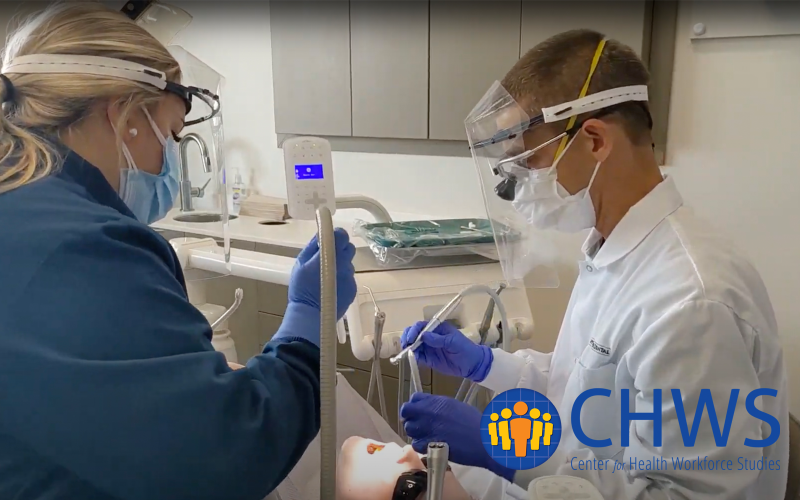Dental Therapists Improving Capacity and Efficiency of Dental Teams

ALBANY, N.Y. (June 14, 2022) - Dental therapy is a workforce model that introduces mid-level practitioners—dental therapists—with both preventive and restorative skills. The introduction of dental therapists appears to improve access to and equity in dental service delivery in the US. A recent study conducted by the Oral Health Workforce Research Center (OHWRC) at the University at Albany’s Center for Health Workforce Studies (CHWS) assessed the satisfaction of clinical providers, organizational administrators, and patients with dental therapists working at Apple Tree Dental in Minnesota, the first US state to authorize dental therapy practice statewide. Apple Tree Dental was among the first employers of dental therapists, employing them since 2012.
The OHWRC report describes the results from 2 surveys. The first survey conducted February-April 2021 assessed clinician and administration satisfaction with the use of dental therapists on oral health teams at Apple Tree Dental. The second assessed patient satisfaction with their clinical providers making comparisons across provider type and was conducted February-August 2021.
Key findings included
Dental teams are very satisfied with the addition of dental therapists (DTs)
- DTs fit very well on dental teams while performing high quality work
- Dentists can work more effectively and efficiently when teamed with a DT
Benefits of an expanded dental team include
- Timelier service delivery with reduced wait times
- Patients get more dental care needs met in one visit
DTs feel they are valued members of their clinical teams
Patient satisfaction is high
- Patients were very satisfied with all dimensions of their dental care: information and communication, understanding and acceptance, technical competence and treatment satisfaction
“This research illustrates the successful integration of dental therapists into established dental teams,” says CHWS Project Director Margaret Langelier. “Not only do dental therapists help increase organizational capacity and access to care, but our study indicates that patient satisfaction is high with these new dental providers.”
To view the report, visit the CHWS website. For more information about the Oral Health Workforce Research Center, visit the Center's website.
Established in 1996, CHWS is an academic research organization, based at the School of Public Health, University at Albany, State University of New York (SUNY). The mission of CHWS is to provide timely, accurate data and conduct policy relevant research about the health workforce. The research conducted by CHWS supports and promotes health workforce planning and policymaking at local, regional, state, and national levels. Today, CHWS is a national leader in the field of health workforce studies, and the only HRSA-sponsored center with a unique focus on the oral health workforce.
This work was supported by the Health Resources and Services Administration (HRSA) of the US Department of Health and Human Services (HHS) as part of an award totaling $449,821. The contents are those of the authors and do not necessarily represent the official views of, nor an endorsement by, HRSA, HHS, or the US Government.


